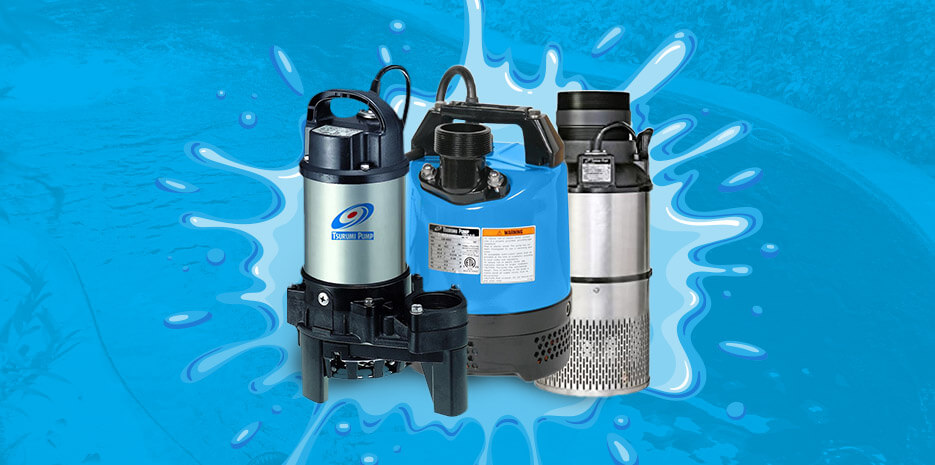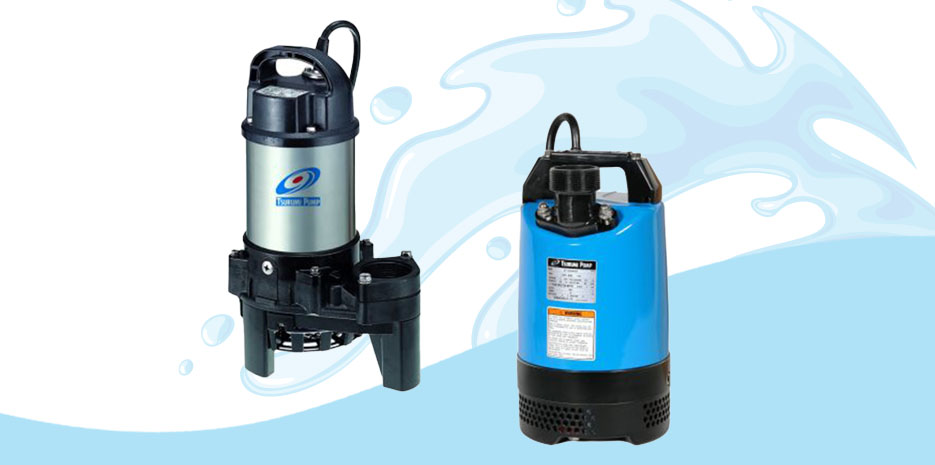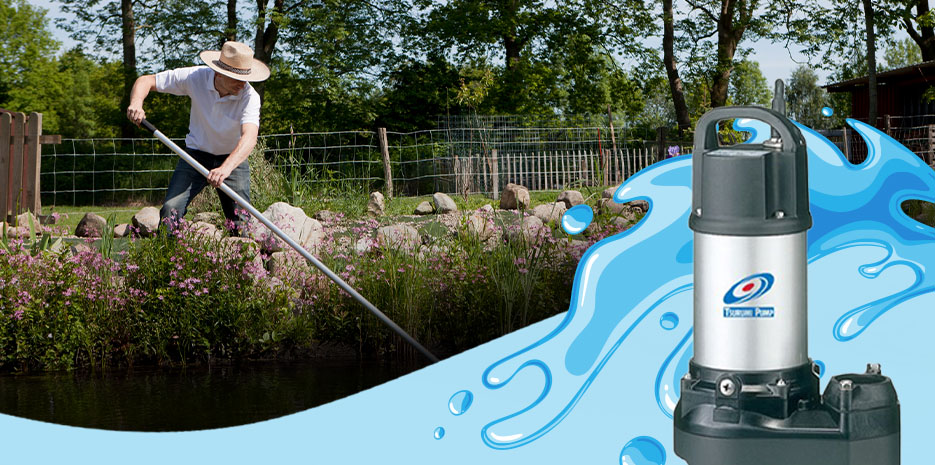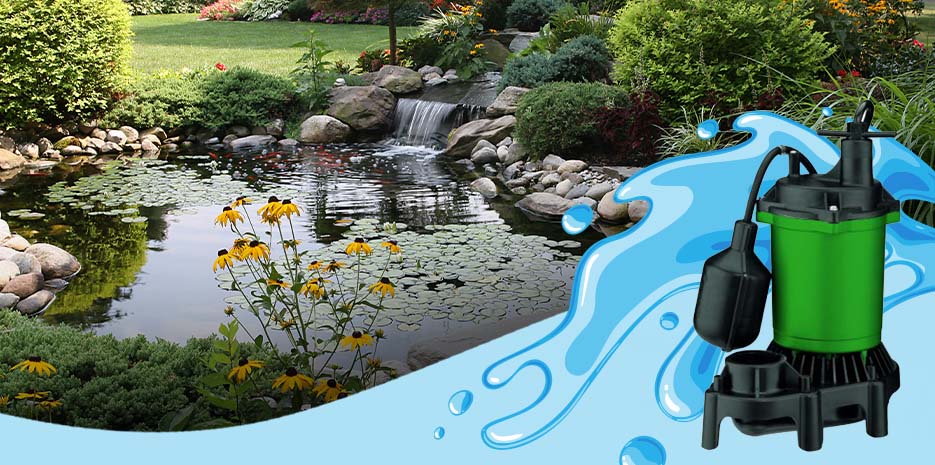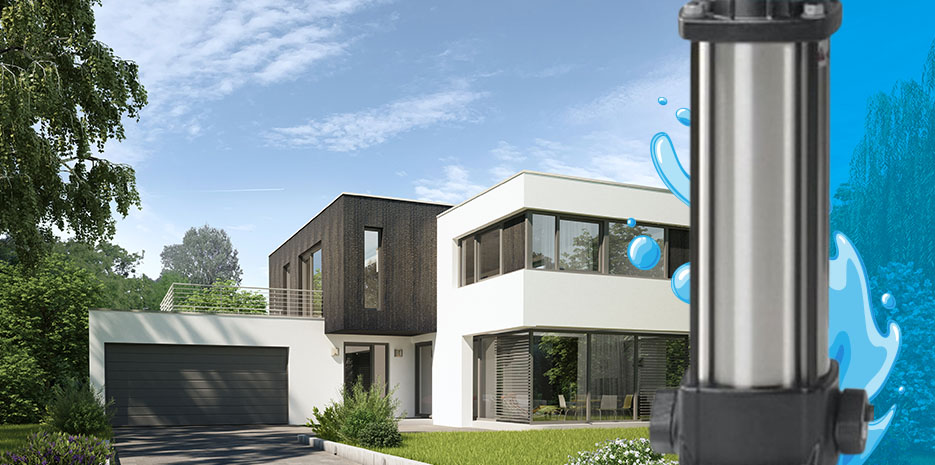Ponds are excellent additions to your home, office or other outside areas. The cool, clear water adds beauty and serenity to any location. You can also build a pond as a DIY project, making it a popular project option for all types of homeowners. With the correct installation and maintenance practices, you can create a beautiful and lasting pond.
Pumps are crucial components of ponds. These devices keep your pond water healthy by circulating water. With regularly circulating water, nutrients can spread evenly to fish, plants and other life forms in your pond. Pumps also help oxygen spread throughout the water and power other pond features like waterfalls.
To get the maximum benefits of a pump, you need to select the correct size for your pond. The right size pump will filter water correctly and keep your pond in its best shape. You might wonder, "Do I need a pump for my pond?" or, "How big of a pond pump do I need?" This article shows you how to choose a pond pump.
Why Pumps Are Important for Ponds
Pumps are crucial for pond wellbeing and longevity. Installing a pump is an essential step in pond creation. You can keep plant and animal growth safe and enhance your pond's overall appearance.
Here are other reasons why pumps are so important for ponds:
Oxygenation
- Without a pump circulating the pond water, it becomes stagnant. The stagnation could lead to reduced oxygen in your water. If you don't have sufficient oxygen levels in your pond, it could become uninhabitable for fish or other aquatic life forms. A lack of oxygen also decreases the health and appearance of your pond. But with a pump, the water continues flowing and remains healthy.
Enhanced appearance
- Everyone wants their pond to be aesthetically attractive. Ponds make beautiful additions to your home, office or other space, and you want to keep it as attractive as possible. A pump ensures your pond water keeps flowing and reduces algae or fungus growth. It also prevents your water from becoming dirty or an unattractive color. Pumps help you maintain a pond's natural beauty.
Safe water
- Pumps also help you maintain safe water. When water becomes stagnant, it could provide an opportunity for mosquitoes to lay eggs or unsafe algae to grow, contaminating your pond water. Instead, a pump creates safe water for your pond by encouraging the correct water movement. It remains a safe place for fish and other pond life to grow healthfully. You can protect the lives of the aquatic life in your water and keep your pond healthy overall with a pond pump.
What Size Pump Do You Need for Your Pond?
Selecting the right size pump is essential regardless of where you establish your pond. The pumps prevent water stagnation, keeping the water's oxygen levels high. With proper oxygenation, all life forms in your pond stay healthy, and your water stays clean. Proper water movement discourages the appearance of mosquitos and algae. Overall, pumps are critical for your pond's health.
Pumps are available in many different styles and sizes. You should choose your pond's pump based on your needs. For example, a large pond or one with more components might require a more powerful pump.
There are two major types of pumps:
Submersible pumps
External pumps
- External pumps are placed above the water line.
Submersible pumps are often ideal for ponds because you can maintain the natural aesthetic. You don't have to consider the pump's appearance, as you cannot view it from above the surface.
When determining what pump size you need, you will need to keep various factors in mind. Here are some considerations you should think about as you select your pump.
Pond Pump Applications
First, it's a good idea to consider your pond pump's applications. Each application type has varying sizes and uses. In addition to submersible and external pumps, pumps are categorized by their drive mechanisms and whether they are purely functional or also decorative. Depending on your preferences, you can choose from the following pump types:
Magnetic drive pumps
- These pumps maximize electrical efficiency. They are commonly used for waterfalls and streams with smaller ponds since they're smaller and circulate less water.
Direct drive pumps
- Direct drive pumps are often used for larger ponds and waterfalls. They have more power but also use more electricity.
Decorative pumps
- Lastly, you might also select a decorative pump. These pumps focus more on visual effects than water recirculation. For instance, they might be shaped like a plant or include LED lights that enhance your pond's appearance.
Consider how you intend to use your pump and let that guide your selection. Each application type might have a different size that suits it better. For example, you might use your pump for:
- Filtration
- Recirculation
- Waterfalls or fountains
- Other aquatic features, like helping with fish
You should also consider any additional features in your pond. Do you want to include waterfalls or extra fountains? If so, this adds more considerations to your sizing. The larger your waterfall is, the bigger pump you will need. Some pumps are available for just waterfalls, while others can serve both your pond and the waterfall together.
However you plan to use your pump, you need to consider its purpose during your selection process.
Pond Dimensions
Next, you need to measure your pond's dimensions. Having exact measurements of your pond's length, width, depth and volume can help you choose the appropriate pump size. These dimensions can also help you communicate with professionals if you have further questions on choosing pump size.

Take careful measurements of your pond's length, width and depth. Because ponds come in all different sizes and shapes, your measuring strategy might differ. If you have an irregularly shaped pond, measure the longest, widest and deepest parts to ensure you don't underestimate how much water it holds.
In general, here is how to calculate the volume of a pond for standard shapes:
For circular ponds
- To calculate a circular pond's volume, measure its diameter at the widest part of the pond and its depth at the deepest portion in feet. Multiply the diameter by two and the depth by 5.9. Finally, multiply these two numbers to get a total volume in gallons.
For square or rectangular ponds
- For square ponds, measure the length, width and depth in feet. Multiply the length by the width by the depth, then multiply that number by 7.5. The resulting number is the volume in gallons.
For oval ponds
- As with rectangular ponds, you should measure an oval pond at its deepest, widest and longest points. Multiply the depth by the width by the height. Then, multiply the result by 6.7 to determine the volume in gallons.
Once you have these measurements, you can use them to determine the necessary size of your pump. A large pond will likely require a stronger pump, while a smaller size might not need something as intensive. The more water your pond contains, the more pump power you require. That way, it can sufficiently circulate water to all areas.
Waterfall Dimensions
If your pond has a waterfall, you should also include its dimensions to decide on the best pump size for your pond. A waterfall's height and flow rate can influence the type and size of your pump. Some people buy separate pumps for their waterfalls, while others use one pump to serve both their pond and waterfall. However, if your waterfall is particularly large or circulates a lot of water, you might require an additional pump.
Start by measuring the width of your waterfall's stream and the height of the waterfall from the top to the pond's surface. Generally, a wider, taller waterfall will have a larger flow rate and require a bigger pump.
If your pond also has a fountain, you should measure the water stream's height from the water. Any extra water features will impact a pump's effectiveness, so consider them as you choose a pump.
Water Circulation Needed
Finally, you need to understand how much water circulation is necessary to help you choose a pump size.
For most filters, all the water in your pond should recirculate through it every two hours. For example, if you have a 1,200-gallon pond, you will need a pump that moves at least 600 gallons per hour (GPH) to ensure all the water cycles through the filter in two hours.
You might consider circulating the water more often if you have many life forms in your pond, such as fish. The more water your pump moves, the cleaner you can keep your pond.
Pond pumps are available at different water circulation levels. To find the best pump for your pond, you'll need your pond's volume. Then, you can decide on the necessary water circulation and choose a pump to accommodate that amount.
Next Steps for Sizing Water Pumps
After considering these factors, you can perform further calculations to find the best water pump for your pond. Remember that the correct pump size is crucial for the overall health of your pond, so getting an accurate measurement is important.
To size a pump correctly, you should calculate two critical numbers — flow rate and head height. Here is an overview of these numbers and how to calculate them.
Flow Rate
A pump's flow rate is the volume of water that moves per time measurement. You can measure it in gallons per hour (GPH) or liters per hour (LPH). In other words, the flow rate refers to how much water your pump can move in one hour.

The correct flow rate can help you select the appropriate pump for your pond. Knowing your pump's flow rate can also help you determine when your pump is underperforming. For instance, if your pump typically works at one speed but suddenly has a lesser flow rate, you'll know your pump might need maintenance or assistance.
If you haven't installed your pump yet, you will have to calculate the desired flow rate. To determine your desired flow rate, consider these factors:
- Type of fluid
- Distance fluid must travel
- Volume and distance the liquid must travel in a specific time
Remember that most filters suggest your pump recirculates all water every two hours.
Once you have a system installed, you can measure the current flow rate with a different strategy. You can manually collect the liquid that moves through the pump and keep track of the amount of time it took to retrieve it. Multiply as necessary to get the flow rate in GMP or LPH.
For example, suppose you collected 10 gallons in one minute. Since there are 60 minutes in one hour, you'd multiply 10 by 60 to calculate your current flow rate of 600 GPH. However, because many pond pumps move hundreds of gallons each hour, it's often easier to measure the flow rate with a flow meter.
Head Height
Once you have a desired or current flow rate, you will need a head height measurement for your pond pump. Pumps do not supply the same flow rate in every circumstance. Instead, the flow rate varies on head height. This measurement refers to the height of the water from the pump's surface to the peak water gush.
As a pump's head increases, its flow level decreases. This decrease is due to the higher height, making gravity and friction resist it further.
A flow rate is only a potential or anticipated measurement. Without a head height, you cannot gather an accurate flow rate. A pump size should provide the desired flow rate at your system's head height.
With a precise head height and flow rate, you can calculate what size of pond pump you need.
Once you have the desired head height or another component in mind, you can search for pumps that meet these requirements. Most pumps list factors like water circulation or flow rate in their product description. If not, you can ask a professional for assistance as you choose.

Find the Pump and Parts You Need With ePumps
Finding the right size for your pond's pump is essential. At ePumps, we understand the necessity of a high-quality pond pump. We have over 20 years in the pumps industry and pride ourselves on our premier customer service and pump offerings. Whether you need to know how to connect a pond pump and filter or how to install a pond water pump, ePumps can assist you.
We can help you find the best pond pump from our extensive catalog. Our pumps come from the top manufacturers in the industry, including:
If you're still deciding between pump types or have any questions about the purchasing process, ePumps is here for you. Our customer service team offers ongoing support, ensuring you make the correct selection for your pond.
To get started with ePumps, browse our catalog today or contact us at (844) 378-6771 with any questions.
